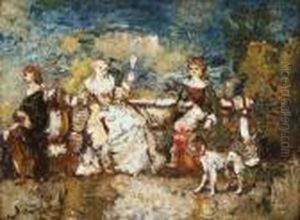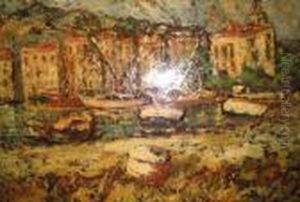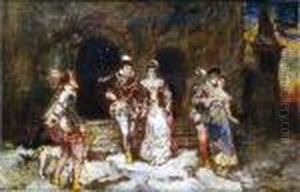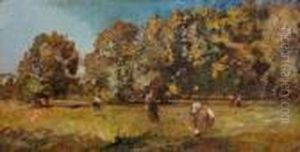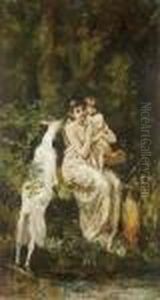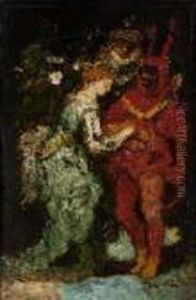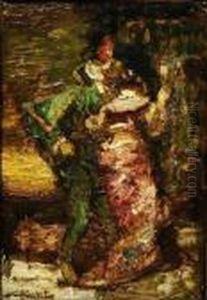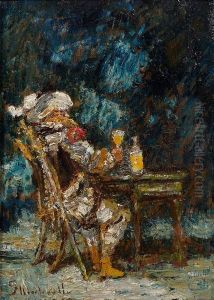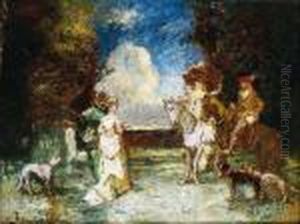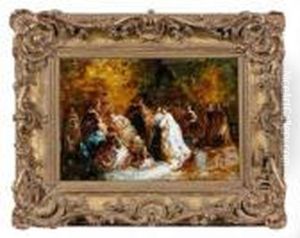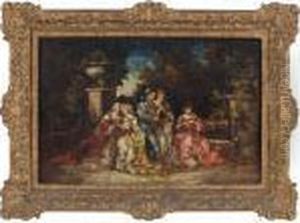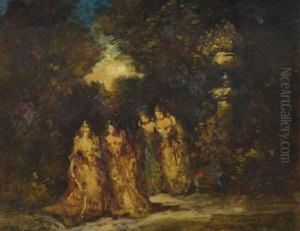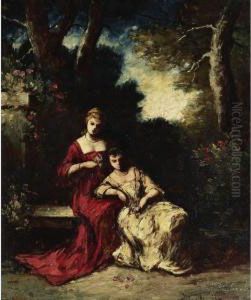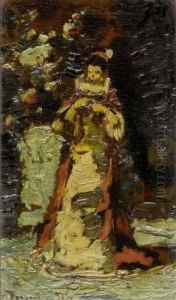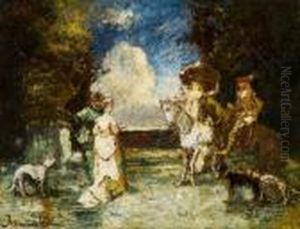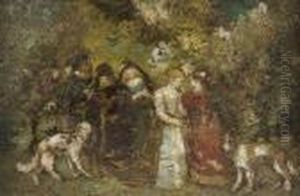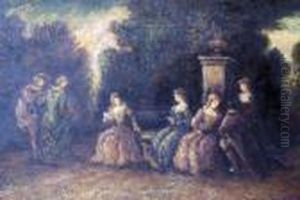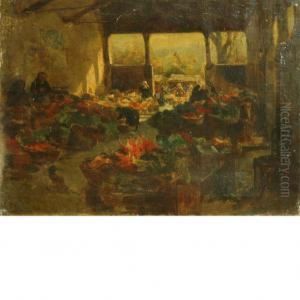Adolphe Joseph Th. Monticelli Paintings
Adolphe Joseph Thomas Monticelli, born on October 14, 1824, in Marseille, France, was a significant yet often overlooked figure in the world of 19th-century art. He developed a highly individualistic style, characterized by thick impasto, vibrant color, and dynamic brushwork, which would later influence the work of Vincent van Gogh and contribute to the foundations of modern art.
Monticelli's early training began at the École Municipale de Dessin in Marseille under the instruction of Augustin Aubert and later, at the École des Beaux-Arts in Paris, where he studied under Paul Delaroche. He was heavily influenced by the work of the Old Masters at the Louvre, particularly the opulent color and texture of the 17th-century Flemish and Venetian schools. This initial academic training provided Monticelli with a firm grounding in traditional techniques, which he would later build upon in his own innovative fashion.
In Paris, Monticelli was exposed to the work of the Romantic painters, such as Eugène Delacroix, whose use of color and emotive expression had a lasting impact on his work. He began exhibiting at the Salon in 1850 and continued to do so for over two decades. However, he never achieved significant commercial or critical success during his lifetime. Nonetheless, he was highly regarded by his peers, including the writer Émile Zola, who praised his work for its originality and expressiveness.
Monticelli's oeuvre is diverse, encompassing genre scenes, still lifes, portraits, and landscapes. His later work, created after he returned to Marseille in the 1870s, is particularly noted for its fairy-tale like quality and rich, jewel-like palette. His scenes of gardens and social gatherings are often populated by elegantly dressed figures and dappled with light, demonstrating his fascination with capturing the ephemeral qualities of nature and human interaction.
Despite his lack of fame during his lifetime, Monticelli's work was posthumously recognized for its influence on the Post-Impressionists. Vincent van Gogh, in particular, admired Monticelli's bold use of color and is known to have collected his work. Van Gogh's brother, Theo, dealt in Monticelli's paintings, further establishing the connection between the two artists. Monticelli's contribution to the development of modern art became more widely acknowledged in the 20th century, with art historians crediting him as a precursor to the Fauvist and Expressionist movements.
Adolphe Monticelli's life was marred by financial struggles and he remained relatively obscure until the end of his life. He died on June 29, 1886, in Marseille, leaving behind a legacy that would only be fully appreciated years after his passing. Today, his works can be found in major museums around the world, including the Musée d'Orsay in Paris and the Metropolitan Museum of Art in New York.



